The American Institute of Architects (AIA) Academy of Architecture for Health (AAH) named five projects winners of its 2019 Healthcare Design Awards.
The awards recognize cutting-edge designs that help solve aesthetic, civic, urban and social problems while also being functional and sustainable. Recipients can include healthcare building design, healthcare planning, and healthcare design-oriented research.
This year’s projects were awarded by a seven-member jury:
• Marlon Blackwell, FAIA (Chair), Marlon Blackwell Architects, Fayetteville, Arkansas
• Vincent Della Donna, AIA, ACHA, Jackson, New Jersey
• Brian Uyesugi, NBBJ, Seattle, WA
• Sunil Shah, Kaiser Permanente, Oakland, California
• Jim Henry, AIA, CallisonRTKL, Dallas, TX
• Jocelyn Stroupe, CannonDesign, Chicago, IL
• James Childress, FAIA, Centerbrook Architects, Centerbrook, Connecticut
The 2019 Healthcare Design Award winners are (project descriptions and images courtesy AIA):
Category A - Built: Less than $25 million (construction cost)
The GHESKIO Tuberculosis Hospital, Port-au-Prince, Haiti | MASS Design Group
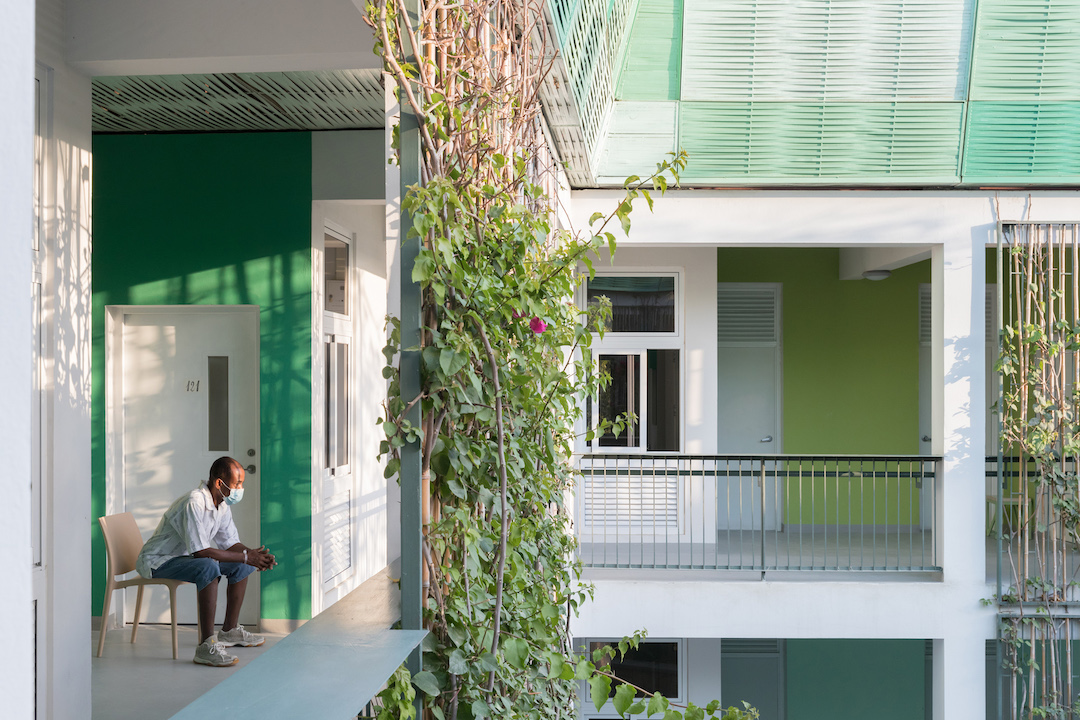 Photo: Iwan Baan, www.iwan.com, courtesy AIA
Photo: Iwan Baan, www.iwan.com, courtesy AIA
The earthquake that hit Port-au-Prince in 2010 exacerbated Haiti’s already high prevalence of tuberculosis by destroying the country’s health infrastructure and interrupting patient treatments. This precipitated an outbreak of Multi-Drug Resistant Tuberculosis (MDR-TB), a highly contagious disease that requires treatment lasting up to 24 months. Patients remain infectious for the first 2-6 months of their treatment regimen, during which time they need to be hospitalized in isolation to prevent the spread of the disease.
Both infection control and patient trauma—from extended seclusion and because of the severe side effects of medication (which can include blindness, deafness, and emotional instability)—were driving factors in the design of the Tuberculosis Hospital for Les Centres GHESKIO. The new GHESKIO Tuberculosis Hospital replaced the previously destroyed facility at Signeau, providing TB patients an effective and dignified place to stay for the duration of their long-term treatment. Simple but effective methods of passive ventilation and infection control were used to reduce in-hospital transmission of TB in this high-risk population, as well as reduce energy costs for the facility.
 Photo: Iwan Baan, www.iwan.com, courtesy AIA
Photo: Iwan Baan, www.iwan.com, courtesy AIA
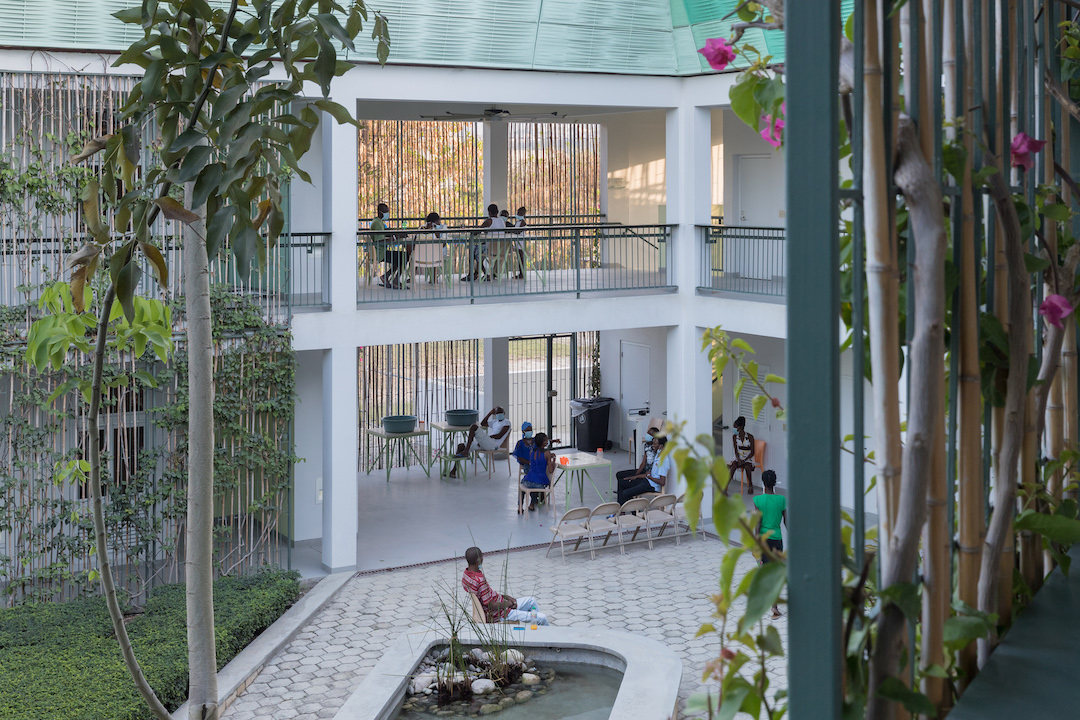 Photo: Iwan Baan, www.iwan.com, courtesy AIA
Photo: Iwan Baan, www.iwan.com, courtesy AIA
Project attributes
Construction cost or anticipated construction cost: $2 million
Building area or anticipated building area: 14,000 sq ft
Construction start date or anticipated construction start date: June 2012
Substantial completion date or anticipated substantial completion date: March 2015
Project team
Construction Manager: GBS Group
Engineer -Civil: Fall Creek Engineering
Engineer - M/E: Berelec
Engineer - Structural: CBI Consulting
General Contractor: Chantiers d’Haiti
Landscape Architect: MASS Design Group
Landscape Consultants: Jardins & Accessoires
Westlake Dermatology Concrete and Glass Pavilion, Marble Falls, Texas | Matt Fajkus Architecture
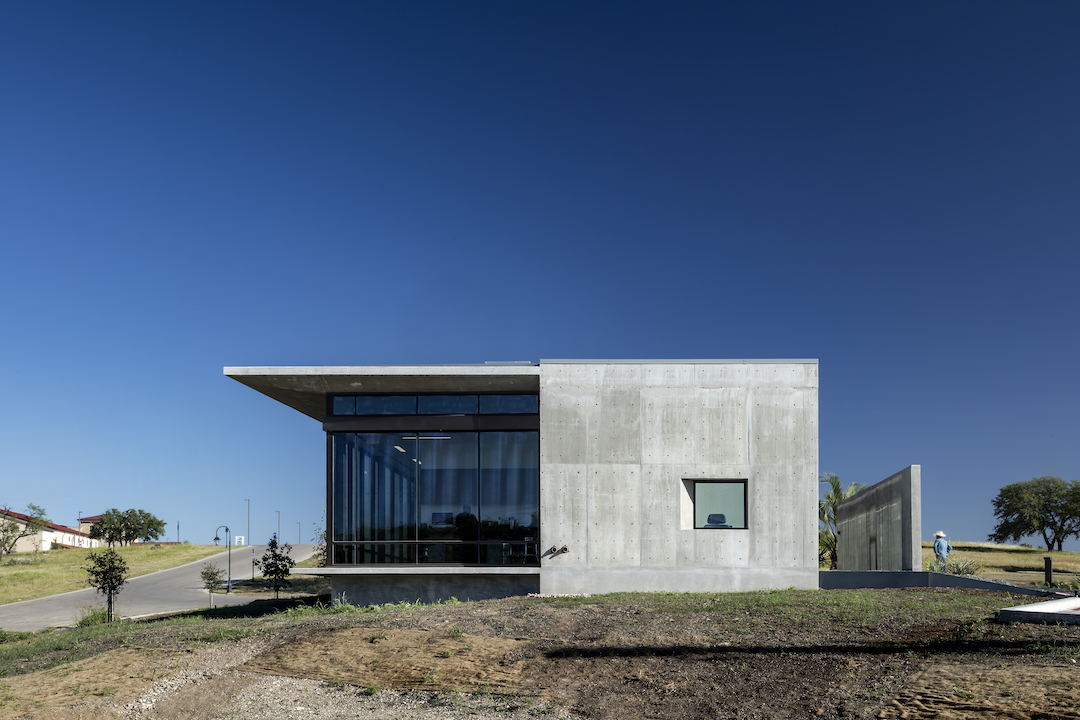 Photo: Charles Davis Smith, courtesy AIA
Photo: Charles Davis Smith, courtesy AIA
The Westlake Dermatology building stands out as a timeless frame in the rolling landscape, rather than appearing clinical or sterile. The medical and cosmetic dermatology practice was founded by Dr. Nikolaidis who believes great design serves as an inspiration for aesthetics. The facility in Marble Falls was a ground-up design project strengthened by a collaborative process directly with the clients and consultants. From a distance, the structure is a pavilion in the landscape, standing as a structure to behold in and of itself, but from in and round the building, it acts as deferential backdrop to function and as a frame for views beyond.
The nuanced concrete and glass shell merges with the designed landscape architecture, enveloping the bright and open interior in calm and quiet as one transitions from the road, through a garden zone, and into the space overlooking the rolling hills. Patient care and comfort are priorities – both influencing the design to embody feeling of security, ease, and solidity. Calibrated detail along with careful material selection result in a soothing and refreshing environment that is considerate of spatial and sensory experiences.
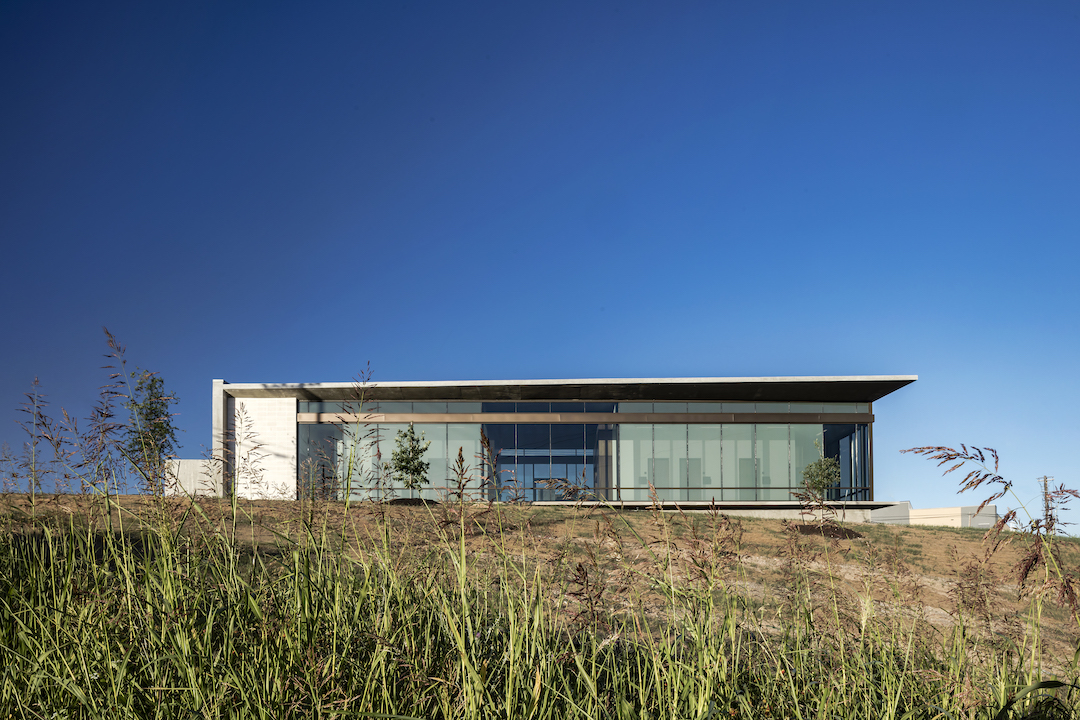 Photo: Charles Davis Smith, courtesy AIA
Photo: Charles Davis Smith, courtesy AIA
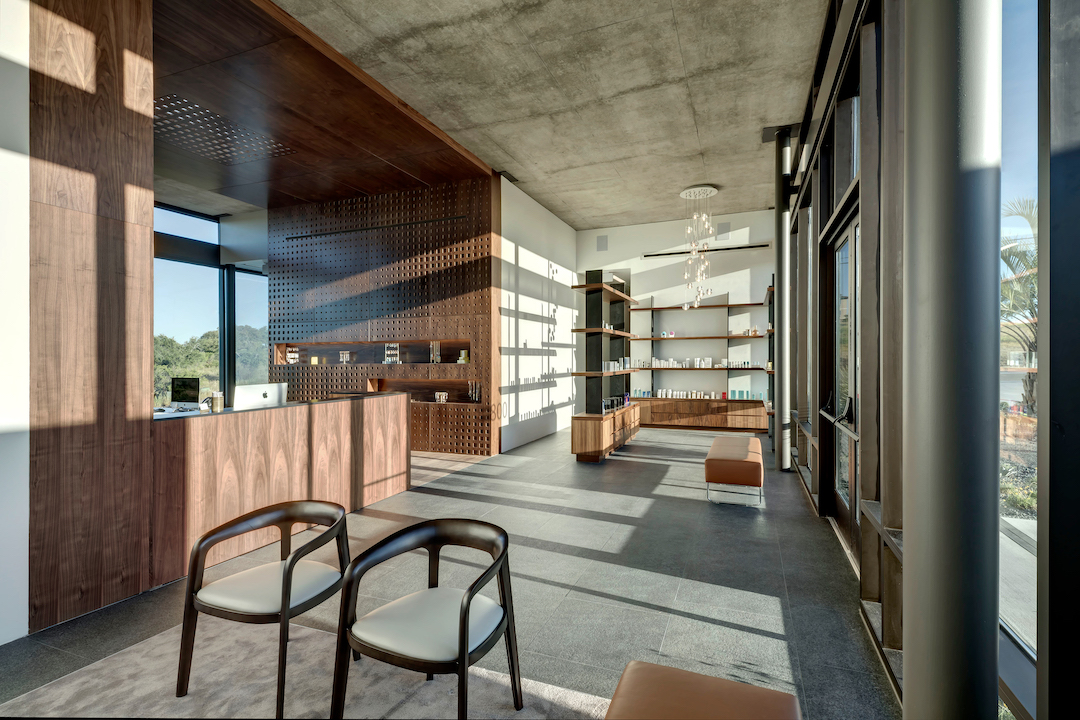 Photo: Charles Davis Smith, courtesy AIA
Photo: Charles Davis Smith, courtesy AIA
Project attributes
Construction cost or anticipated construction cost: $1.8 million
Building area or anticipated building area: 3,000 sq ft
Construction start date or anticipated construction start date: April 2016
Substantial completion date or anticipated substantial completion date: May 2017
Project team
Engineer - Civil: LJA Engineering
Engineer - MEP: DBR Engineering Consultants
Engineer - Structural: MJ Structures
Furniture Selection: Allison Burke Interior Design
General Contractor: Zapalac Reed
Landscape Architect: Eden Garden Design
Category B - Built: More than $25 million (construction cost)
Casey House, Toronto, Canada | Hariri Pontarini Architects
 Photo: Doublespace Photography, courtesy AIA
Photo: Doublespace Photography, courtesy AIA
The renovation and extension to Casey House, a specialized healthcare facility for individuals living with HIV/AIDS, develops a new prototype for hospitals. The facility meets the needs of patients in a setting designed to evoke the experience and comforts of home. In order to create a comfortable, home-like user experience, the embrace emerged as a unifying theme—one of warmth, intimacy, comfort, privacy, connectivity, and solidity. The architecture is a physical manifestation of the embrace. The extension reaches over and around the existing heritage designated building, which has been restored, while the new addition—a robust, textured exterior— surrounds the central courtyard. The landscaped courtyard is visible from every corridor and in-patient room and, given the private nature of the facility, provides protected outdoor space.
Once inside, the experience is about engagement of the old and new, and the organization—the embrace—around the courtyard, which is the ever-present symbol of life-affirming green, water, and light (trees, fountain, and sunlight). The living room, the central gathering space, featuring a two-story atrium, is anchored by a full-height fireplace crafted from Algonquin Limestone. A bridge connects the heritage and new spaces on the second floor with long views stretching from end to end.
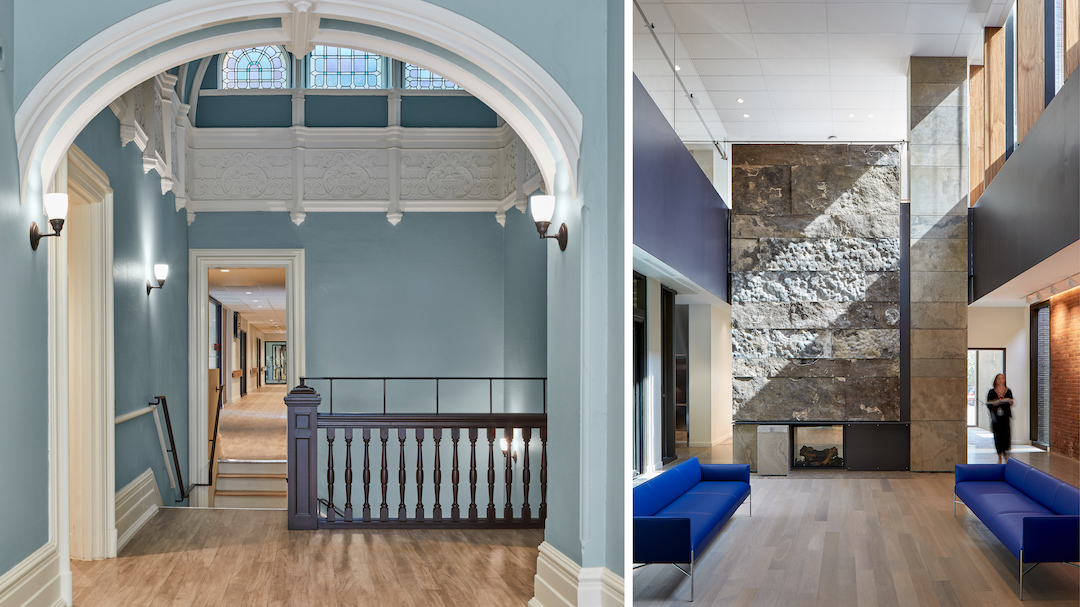 Photo: Doublespace Photography, courtesy AIA
Photo: Doublespace Photography, courtesy AIA
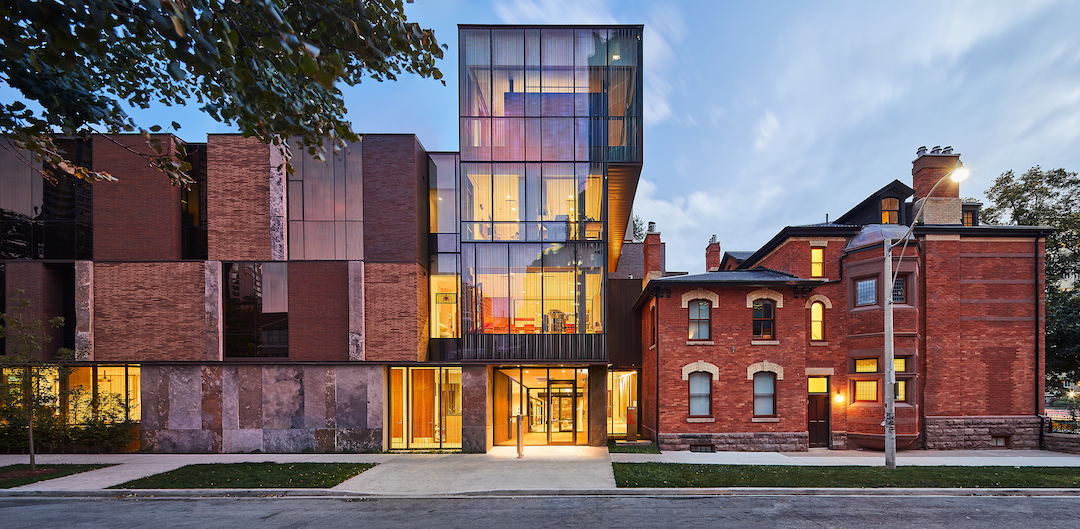 Photo: Doublespace Photography, courtesy AIA
Photo: Doublespace Photography, courtesy AIA
Project attributes
Construction cost or anticipated construction cost: $30 million
Building area or anticipated building area: 59,000 sq ft
Construction start date or anticipated construction start date: March 2015
Substantial completion date or anticipated substantial completion date: September 2017
Project team
Acoustics: Swallow
Code Consultant: David Hine Engineering
Engineer - ME: WSP Canada
Engineer - Structural: Entuitive
Food Service: Kaizen Foodservice Planning
Heritage Consultant: ERA Architects
Landscape Architect: Mark Hartley Landscape Architect
Security: Mulvey & Banani
The U.S. Department of Veterans Affairs Palo Alto (VAPA) Polytrauma and Blind Rehabilitation Center, Palo Alto, California | SmithGroup and The Design Partnership LLP
 Photo: Tim Griffith and Kyle Jeffers, courtesy AIA
Photo: Tim Griffith and Kyle Jeffers, courtesy AIA
The new VA Palo Alto (VAPA) Polytrauma and Blind Rehabilitation Center is one of only five polytrauma centers in the country designed specifically to serve and enhance the patient rehabilitation experience of polytrauma, blind and visually impaired veterans. At 174,000 square feet, it is not only the largest federal rehabilitation facility but also the only center to house polytrauma and blind rehabilitation services under one roof.
The Center’s impactful approach to healing through design—where the environment itself is a tool for rehabilitation—provided the design team provided the team with multiple opportunities to improve the patient experience by designing for our senses—touch, movement, smell, taste, sight, hearing and balance. The evaluation of each design element against these human sensory metrics resulted in a more immersive and healing space for patients, staff and visitors alike. The Polytrauma and Blind Rehabilitation Center exemplifies equity by design—minimizing barriers that patients face to maximize the potential for successful rehabilitation. The design integrates the latest advances in accessibility, universal design, and rehabilitation practices, resulting in a healthcare facility that aims to not only enhance patient recovery during their rehabilitation journey but long after.
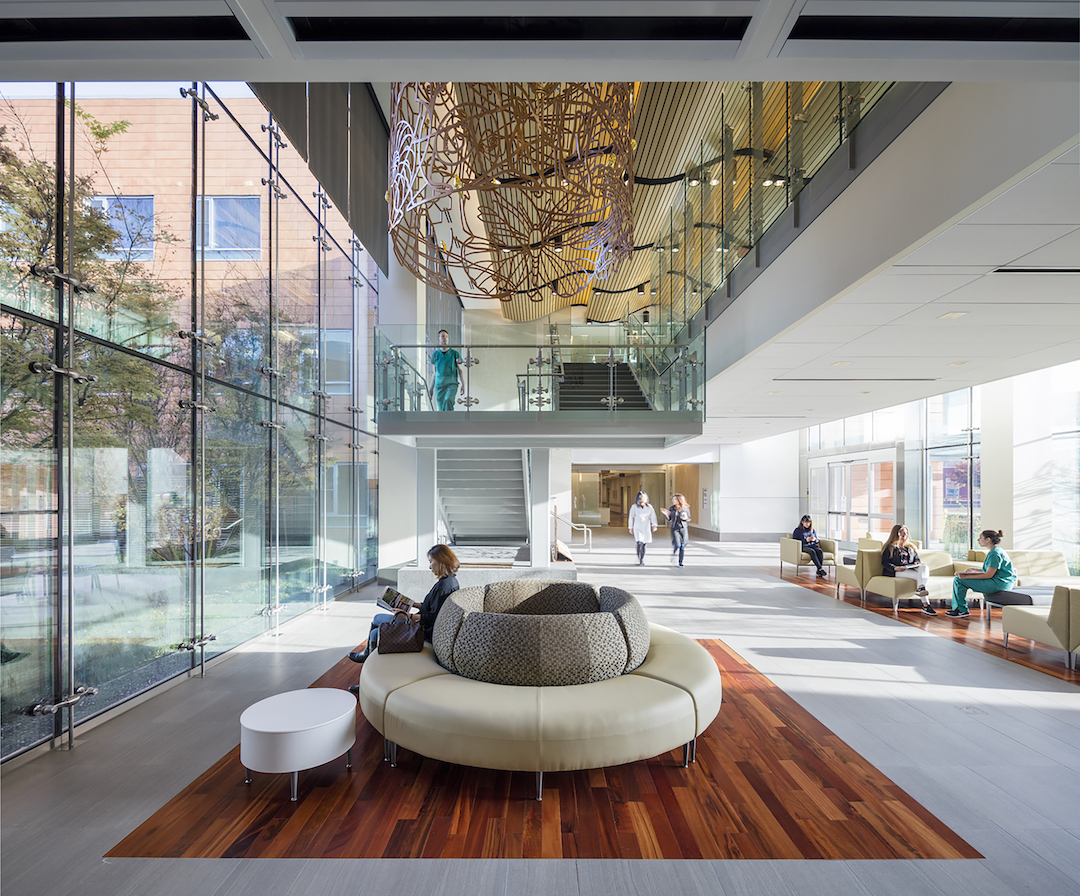 Photo: Tim Griffith and Kyle Jeffers, courtesy AIA
Photo: Tim Griffith and Kyle Jeffers, courtesy AIA
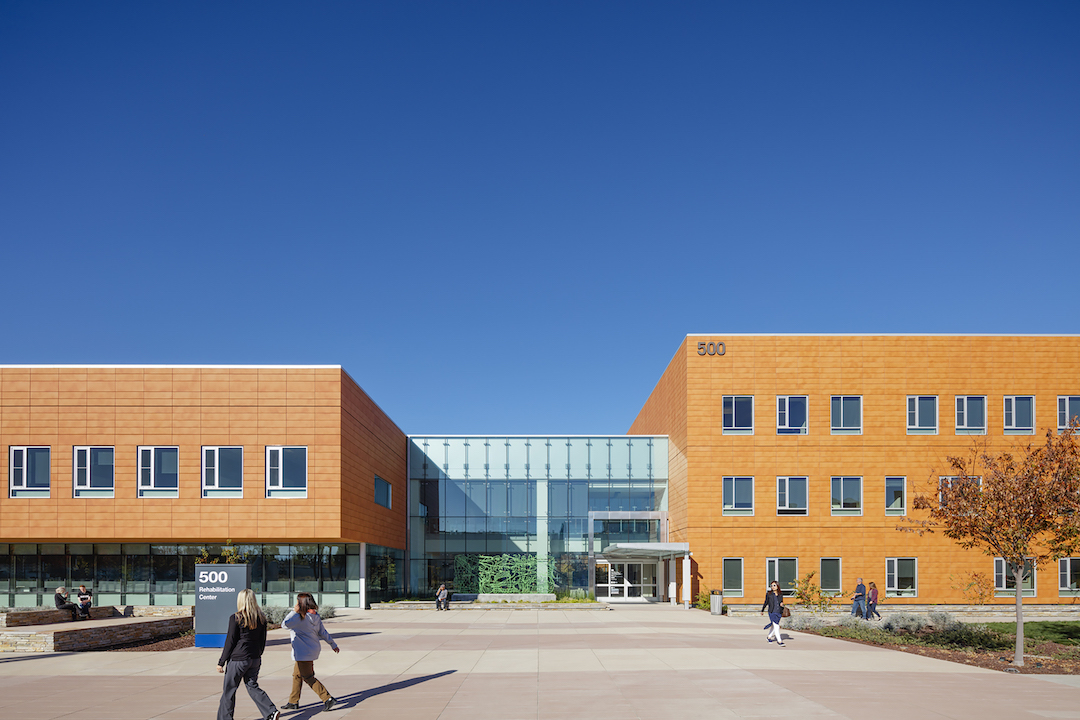 Photo: Tim Griffith and Kyle Jeffers, courtesy AIA
Photo: Tim Griffith and Kyle Jeffers, courtesy AIA
Project attributes
Construction cost or anticipated construction cost: $600 million
Building area or anticipated building area: 174,000 sq ft
Construction start date or anticipated construction start date: October 2011
Substantial completion date or anticipated substantial completion date: November 2020 (estimated)
Project team
Acoustics: Charles M. Salter Associates, Inc.
Engineer - Civil: BKF Engineers
Engineer - Electrical: Guttmann & Blaevoet | Cammisa + Wipf
Engineer - Mechanical : Capital Engineering Consultants, Inc.
Engineer - Plumbing: Capital Engineering Consultants, Inc.
Engineer - Structural: Degenkolb Engineers
Geotechnical: Treadwell & Rollo, a Langan Company
Interiors: SmithGroup
Landscape Architects: Keller Mitchell & Co. | Royston Hanamoto Alley & Abey
Planning: SmithGroup
Signage: Kate Keating Associates
Technology: TEECOM
Category C - Renovations/Remodeled: Primarily built within existing hospital or clinical space or adaptive reuse of an existing building to a healthcare use.
Studio Dental II, San Francisco | Montalba Architects
 Photo: Kevin Scott, courtesy AIA
Photo: Kevin Scott, courtesy AIA
Situated within a rapidly developing neighborhood in San Francisco’s financial district, the dentists’ brick and mortar location is defined by a modern aesthetic, while honoring the historic elements of the base building. This creates a transcendent environment that feels gallery-like and serene. The design centers on a conceptual ‘lantern’ within the dark building core, which communicates a sense of scale, luminescence, and transparency, and envelopes the series of operatories within. The lantern wall panels not only light up the dark building shell, but also glow through the storefront to brighten the street. The lantern provides patient privacy while engaging with the pedestrian street front, in an effort to energize the surrounding community.
In place of a common waiting room, a park-like bench extends the length of the space. Wood trellises provide separation between the bench and operatory rooms without closing off the space. Moments of material contrast are introduced between the rough shell walls, smoked mirror panels, and central colonnade of maple monoliths, which serve as functional storage and define the entry to each private patient room.
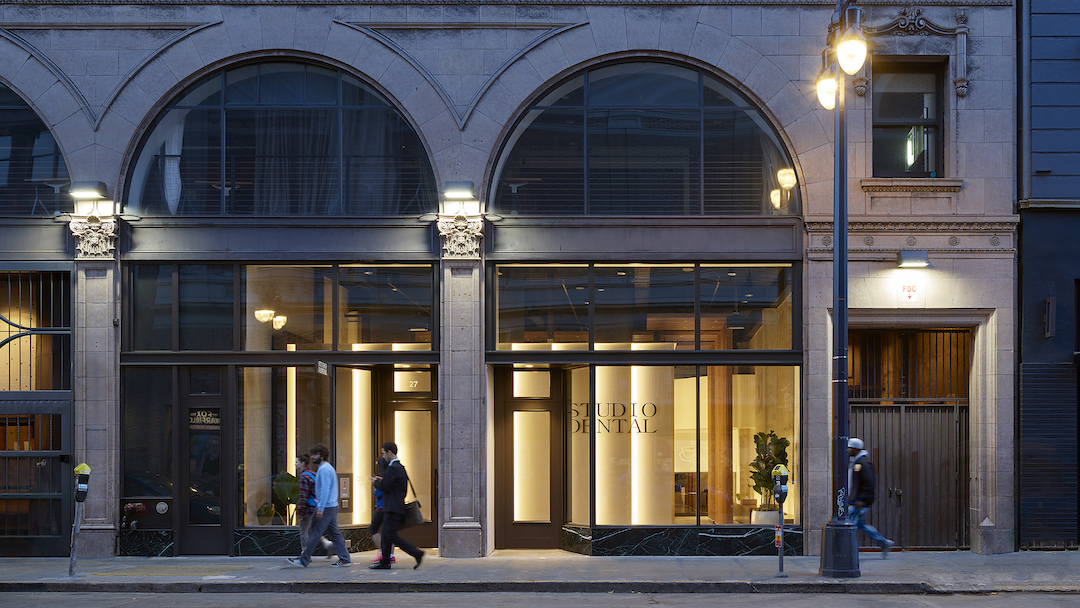 Photo: Kevin Scott, courtesy AIA
Photo: Kevin Scott, courtesy AIA
 Photo: Kevin Scott, courtesy AIA
Photo: Kevin Scott, courtesy AIA
Project attributes
Construction cost or anticipated construction cost: Withheld per Client's request
Building area or anticipated building area: 1,400 sq ft
Construction start date or anticipated construction start date: November 2016
Substantial completion date or anticipated substantial completion date: June 2017
Project team
Engineer - MEP: ACIES Engineering
Engineer - Structural: Julia Y. Chen Design Inc.
General Contractor: Build Group
Lighting: Sean O'Connor
Lighting Fabricator - Millwork: Pacific Westline, Inc.
READ MORE ABOUT THE 2019 Healthcare Design Awards
Related Stories
| Mar 3, 2011
HDR acquires healthcare design-build firm Cooper Medical
HDR, a global architecture, engineering and consulting firm, acquired Cooper Medical, a firm providing integrated design and construction services for healthcare facilities throughout the U.S. The new alliance, HDR Cooper Medical, will provide a full service design and construction delivery model to healthcare clients.
| Mar 1, 2011
New survey shows shifts in hospital construction projects
America’s hospitals and health systems are focusing more on renovation or expansion than new construction, according to a new survey conducted by Health Facilities Management magazine and the American Society for Healthcare Engineering (ASHE). In fact, renovation or expansion accounted for 73% of construction projects at hospitals responding to the survey.
| Feb 22, 2011
HDR Architecture names four healthcare directors
Four senior professionals in HDR Architecture’s healthcare program have been named Healthcare directors.
| Feb 17, 2011
HDR Architecture sponsors national effort to green operating rooms
HDR Architecture, Inc. has joined the group of corporate sponsors of Practice Greenhealth’s Greening the Operating Room Initiative. This sweeping and prescriptive path to green the nation’s operating rooms was launched earlier this year to reduce the environmental footprint of the operating suites in hospitals across the country, which can produce between 20 and 30% of a hospital’s total waste.
| Feb 11, 2011
Iowa surgery center addresses both inpatient and outpatient care
The 12,000-person community of Carroll, Iowa, has a new $28 million surgery center to provide both inpatient and outpatient care. Minneapolis-based healthcare design firm Horty Elving headed up the four-story, 120,000-sf project for St. Anthony’s Regional Hospital. The center’s layout is based on a circular process flow, and includes four 800-sf operating rooms with poured rubber floors to reduce leg fatigue for surgeons and support staff, two substerile rooms between each pair of operating rooms, and two endoscopy rooms adjacent to the outpatient prep and recovery rooms. Recovery rooms are clustered in groups of four. The large family lounge (left) has expansive windows with views of the countryside, and television monitors that display coded information on patient status so loved ones can follow a patient’s progress.
| Feb 11, 2011
Two projects seek to reinvigorate Los Angeles County medical center
HMC Architects designed two new buildings for the Los Angeles County Martin Luther King, Jr., Medical Center as part of a $360 million plan to reinvigorate the campus. The buildings include a 120-bed hospital, which involves renovation of an existing tower and several support buildings, and the construction of a new multi-service ambulatory care center. The new facilities will have large expanses of glass at all waiting and public areas for unobstructed views of downtown Los Angeles. A curved glass entrance canopy will unite the two buildings. When both projects are completed—the hospital in 2012 and the ambulatory care center in 2013—the campus will have added more than 460,000 sf of space. The hospital will seek LEED certification, while the ambulatory care center is targeting LEED Silver.
| Feb 9, 2011
Hospital Construction in the Age of Obamacare
The recession has hurt even the usually vibrant healthcare segment. Nearly three out of four hospital systems have put the brakes on capital projects. We asked five capital expenditure insiders for their advice on how Building Teams can still succeed in this highly competitive sector.
| Jan 31, 2011
Cuningham Group Architecture launches Healthcare studio with Lee Brennan
International design firm Cuningham Group Architecture, P.A. (Cuningham Group) has announced the arrival of Lee Brennan, AIA, as Principal and Leader of its new Healthcare studio. Brennan comes to Cuningham Group with over 30 years of professional experience, 22 of those years in healthcare, encompassing all aspects of project delivery, from strategic planning and programming through design and construction. The firm’s new Healthcare studio will enhance Cuningham Group’s expertise in leisure and entertainment, education, mixed-use/housing and workplace environments.
| Jan 31, 2011
HDR Architecture Releases Evidence-based Design Videos
As a follow-up to its book Evidence-based Design for Healthcare Facilities, HDR Architecture, Inc. has released three video case studies that highlight evidence-based design principles in action.










